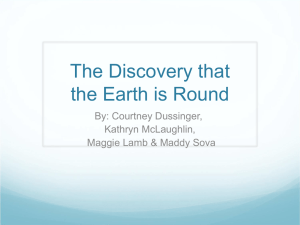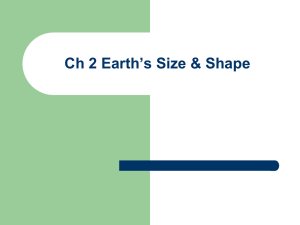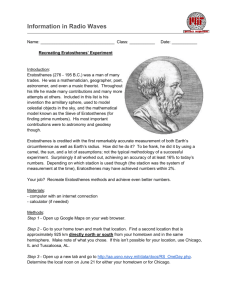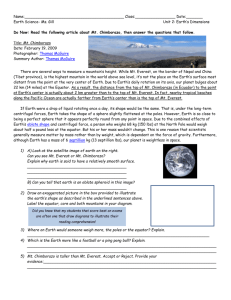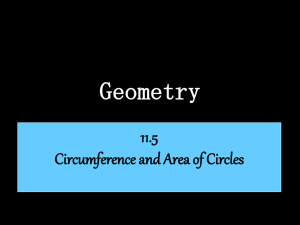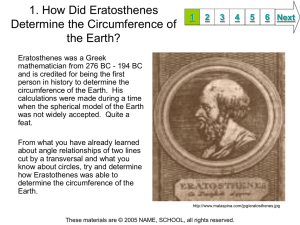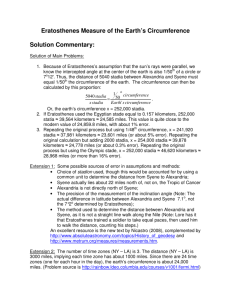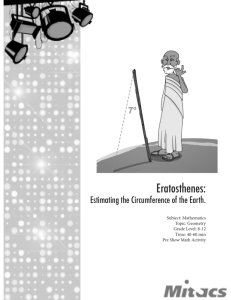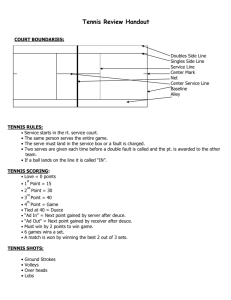Calculating the Circumference of the Earth
advertisement
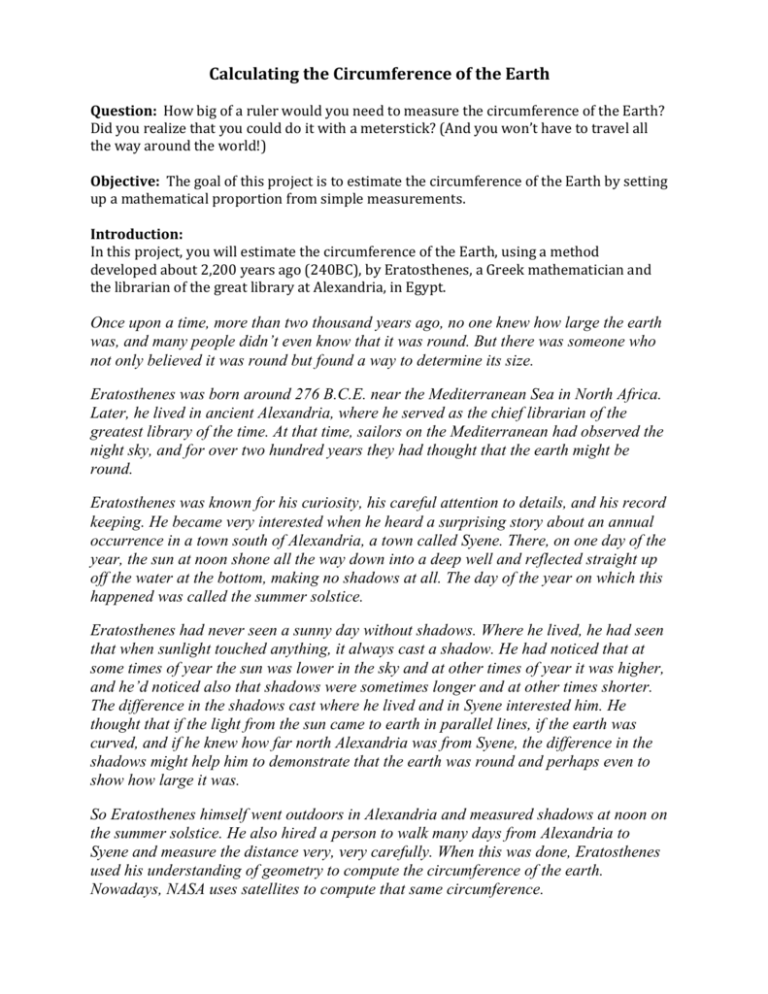
Calculating the Circumference of the Earth Question: How big of a ruler would you need to measure the circumference of the Earth? Did you realize that you could do it with a meterstick? (And you won’t have to travel all the way around the world!) Objective: The goal of this project is to estimate the circumference of the Earth by setting up a mathematical proportion from simple measurements. Introduction: In this project, you will estimate the circumference of the Earth, using a method developed about 2,200 years ago (240BC), by Eratosthenes, a Greek mathematician and the librarian of the great library at Alexandria, in Egypt. Once upon a time, more than two thousand years ago, no one knew how large the earth was, and many people didn’t even know that it was round. But there was someone who not only believed it was round but found a way to determine its size. Eratosthenes was born around 276 B.C.E. near the Mediterranean Sea in North Africa. Later, he lived in ancient Alexandria, where he served as the chief librarian of the greatest library of the time. At that time, sailors on the Mediterranean had observed the night sky, and for over two hundred years they had thought that the earth might be round. Eratosthenes was known for his curiosity, his careful attention to details, and his record keeping. He became very interested when he heard a surprising story about an annual occurrence in a town south of Alexandria, a town called Syene. There, on one day of the year, the sun at noon shone all the way down into a deep well and reflected straight up off the water at the bottom, making no shadows at all. The day of the year on which this happened was called the summer solstice. Eratosthenes had never seen a sunny day without shadows. Where he lived, he had seen that when sunlight touched anything, it always cast a shadow. He had noticed that at some times of year the sun was lower in the sky and at other times of year it was higher, and he’d noticed also that shadows were sometimes longer and at other times shorter. The difference in the shadows cast where he lived and in Syene interested him. He thought that if the light from the sun came to earth in parallel lines, if the earth was curved, and if he knew how far north Alexandria was from Syene, the difference in the shadows might help him to demonstrate that the earth was round and perhaps even to show how large it was. So Eratosthenes himself went outdoors in Alexandria and measured shadows at noon on the summer solstice. He also hired a person to walk many days from Alexandria to Syene and measure the distance very, very carefully. When this was done, Eratosthenes used his understanding of geometry to compute the circumference of the earth. Nowadays, NASA uses satellites to compute that same circumference. How did Eratosthenes make his observations? How was he able to make his computations over two thousand years ago? How close to NASA’ s measurements were his? Part 1: Modeling the Circumference of the Earth Using Eratosthenes’ Method Materials and Equipment: Tennis Ball 2 Thumbtacks Scientific Calculator Metric Ruler Small piece of string to use for measuring distances Large piece of string to use for measuring distances Procedures: 1. Insert two thumbtacks into the tennis ball (Earth) about 1 inch apart so that they are not completely in the ball and that some of the tack is still showing. 2. Using the small piece of string, with as much accuracy as possible measure the distance between the thumbtacks to the nearest millimeter. Record that distance on the data table. 3. Using the small piece of string, with as much accuracy as possible, measure the height of one of your thumbtacks to the nearest millimeter. Record that distance on the data table. 4. In a dark room, have a partner shine the flashlight (Sun) on one of the thumbtacks so that there is no shadow from that thumbtack. There should be a shadow created from the other thumbtack. Using the small piece of string, with as much accuracy as possible, have another partner measure the length of the shadow created from that thumbtack to the nearest millimeter. Record that distance on the data table. 5. Use the formula: -tanX = Opposite to find the angle that the flashlight (Sun) was Adjacent hitting the tennis ball (Earth). Record this angle on the data table. “X” represents the angle in degrees. 6. Use the formula: Circumference = Distance * 360o to find the estimated Sun’s Angleo circum. of the tennis ball. Record this distance on the data table in centimeters. 7. Record the two thumbtacks from the tennis ball (Earth). Use the longer piece of string and wrap it around the tennis ball (Earth) over top of the holes that your thumbtack made. Use the string to measure the actual circumference of the tennis ball (Earth) to the nearest millimeter. Record this distance on the data table. 8. Use the formula: % Error = Your value - Accepted value * 100 to calculate the Accepted value percent error. Use the estimated circumference as “your value” and the actual circumference as the “accepted value”. Record the % error on the data table. Data Table: Distance (cm) Height (cm) Height (adjacent) Length of Shadow (cm) Angle of the Sun Shadow Length (opposite) Angle of Flashlight (Sun) (degrees) Estimated Actual Circumference Circumference of Tennis Ball of Tennis Ball (Earth) (cm) (Earth) (cm) % Error Conclusion: 1. Why would Eratosthenes' method not work if the earth were flat? 2. Why is it important that we assume that the Sun's rays arrive in parallel on the “Earth”? 3. How would your calculated circumference change if you measured the angle larger than it really is? 4. How would your calculated circumference change if you measured the angle smaller than it really is?
